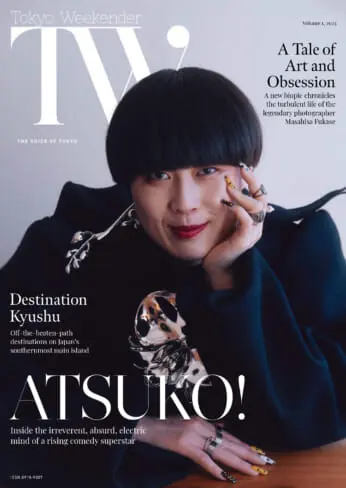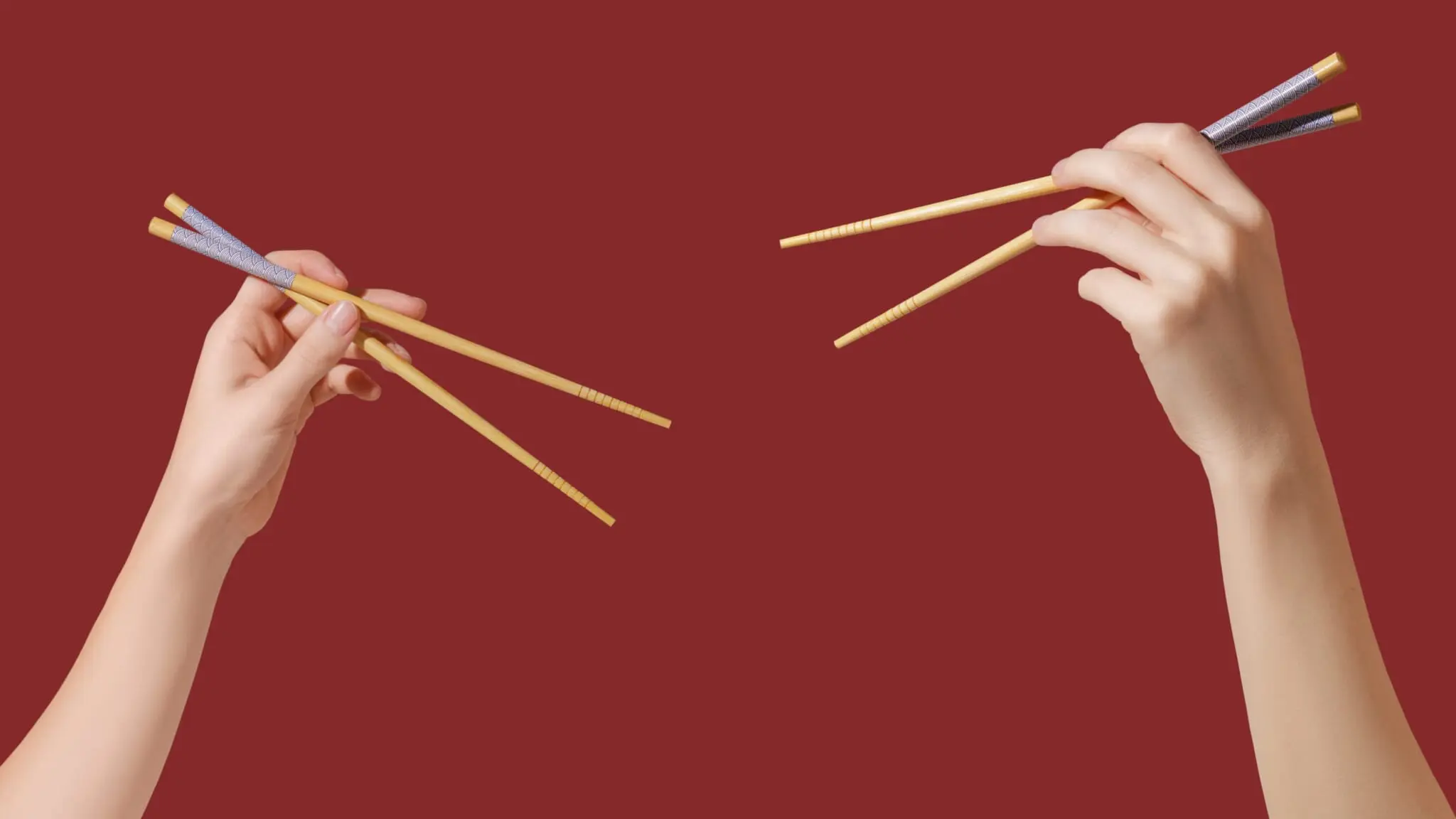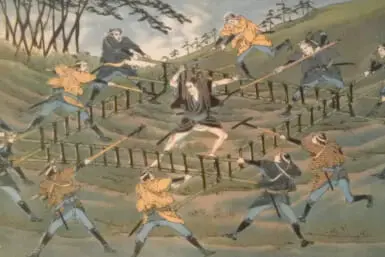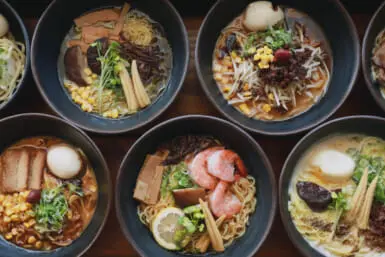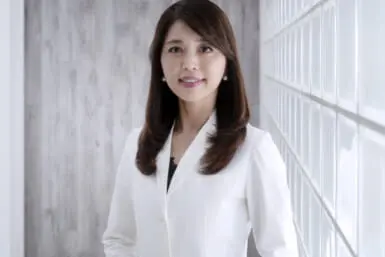Before you visit Japan, it’s helpful to have a working knowledge of chopsticks, and be aware of the language surrounding them. The placement of your eating implements can convey many hidden meanings. And looking like you know how to use them can get you a long way too. This guide will ensure that you come to Japan with confidence, unfussed about making a mistake and ready to dive straight into Japanese cuisine, the local way.
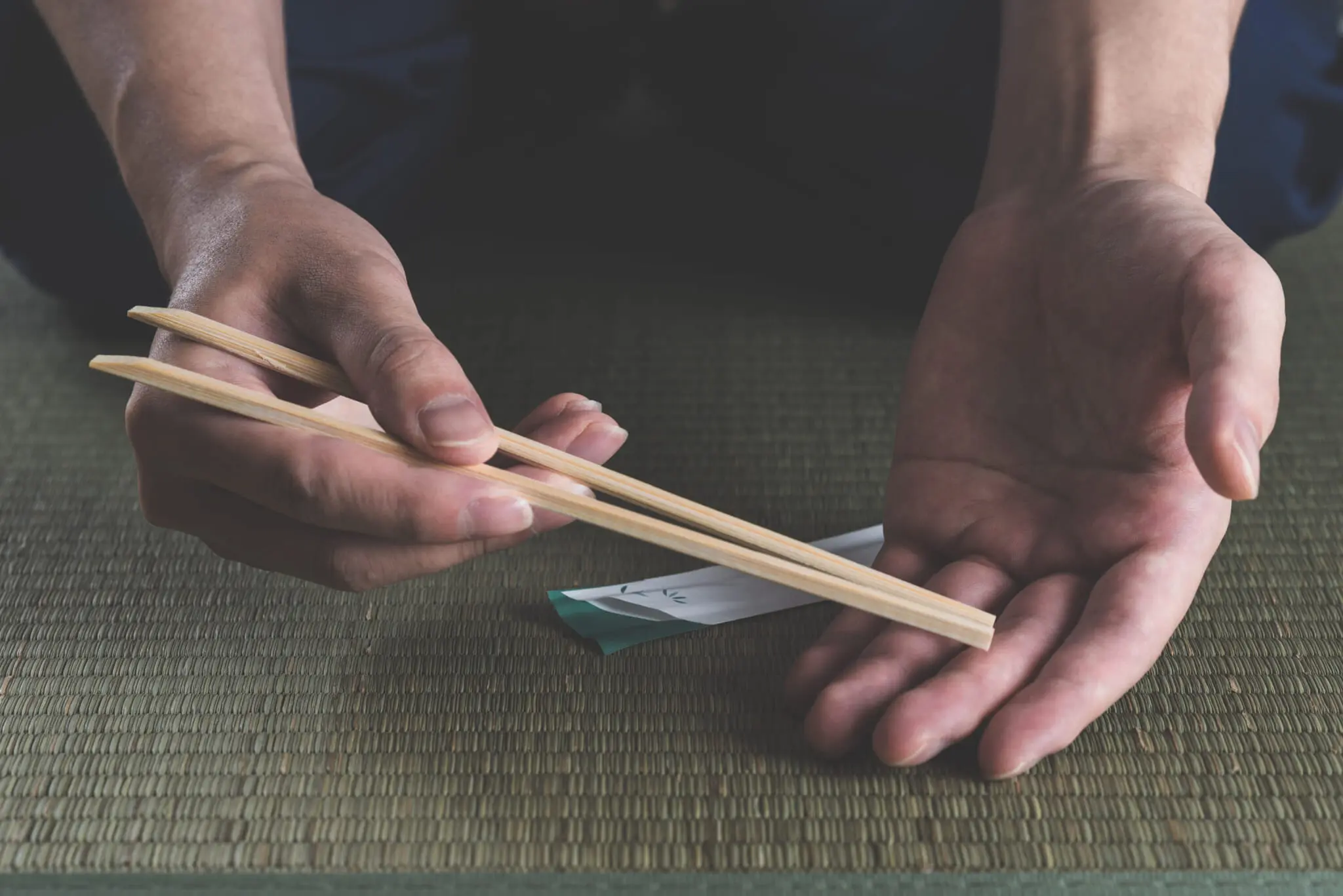
History of Chopsticks in Japan
Thanks to archaeological research, we know that chopsticks, known as hashi in Japanese, have been used in some form since the Yayoi period (300 BC–300 AD), when food began to be heated.
Until the Asuka period (552–710), however, there is little evidence to suggest that chopsticks were used by ordinary people. They ate with their hands instead. Chopsticks were used mainly in rituals at religious festivals. Rather than two pieces of wood like we use today, it seems that the first instances were made from one piece of bamboo, bent in the middle like tweezers. It’s widely accepted that the use of chopsticks for eating came from China.
At first, only the imperial family and nobility used chopsticks for eating. They became widespread from around the Kamakura period (1185–1333), as eating styles became standardized throughout the country, spreading down from the imperial family and samurai, through to ordinary people. By this point, chopsticks were separated into two pieces of wood, and different styles were developed. Lacquered chopsticks also appeared.
By the Edo period (1603–1868), chopsticks in cedar and other woods appeared, and people even recycled chopsticks from wooden barrels.
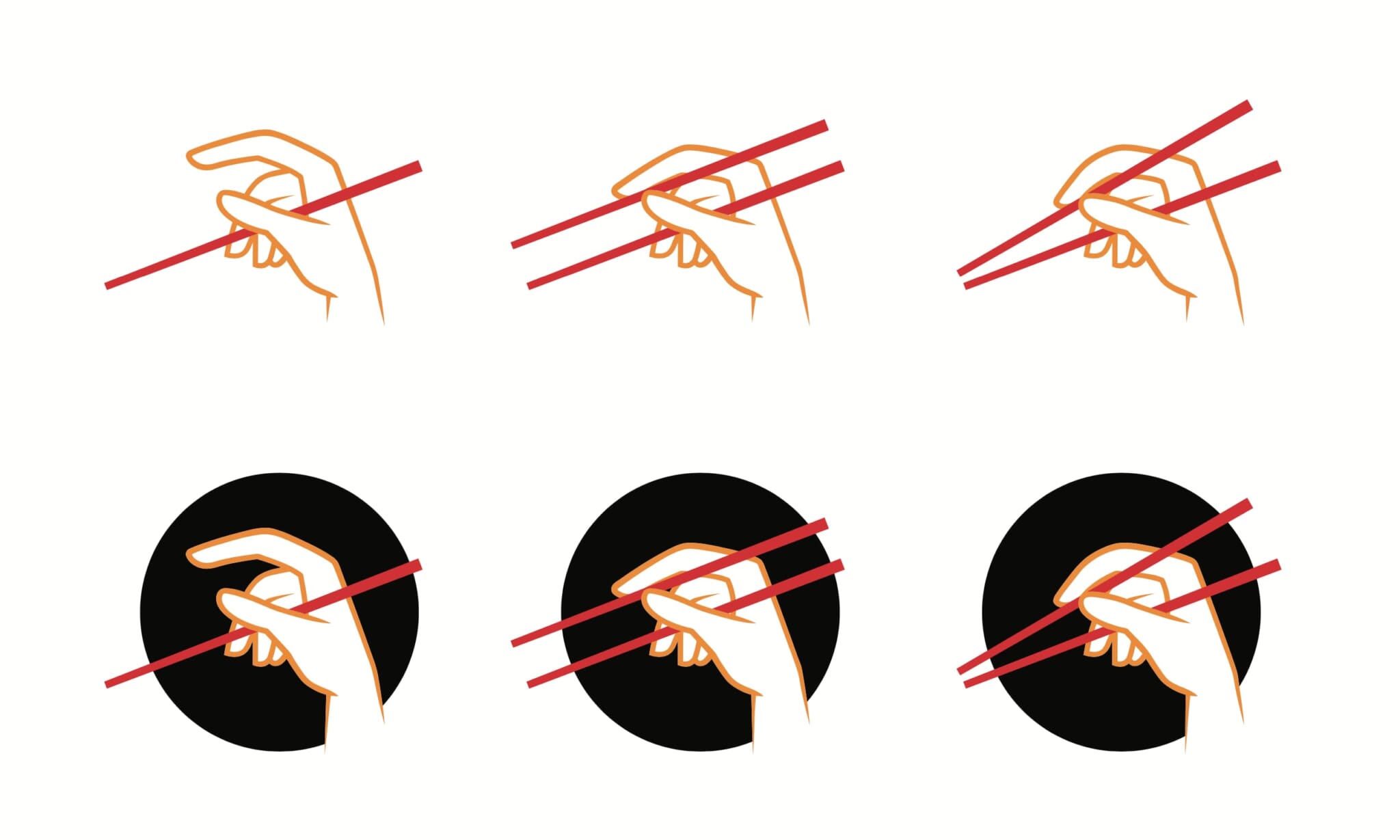
How To Use Chopsticks
Chopstick hand placement
One-handed eating utensils have obvious benefits, like scratching your nose with one hand while shoveling food into your mouth with the other, but they can be tricky to master. Even in Japan, young children start off with spoons, not chopsticks. This then progresses to training chopsticks, and once they’ve mastered them, real ones.
For those of us who don’t have stabilizer sticks, though, practice makes perfect. And form is key.
Hold the bottom chopstick straight, snug in the crook of your thumb and the middle finger. This chopstick does not move. Hold the other chopstick on top between your index finger and the tip of your thumb like a pencil, and move it up and down.
Repeat the up and down motion, moving the chopstick on the top up and down. This is all you need to do. Chances are that it won’t come naturally, but that’s fine. Practice, practice, practice.
Chopstick practice: things to note
Keep the points below in mind as you practice.
- In Japanese kindergarten and elementary school, children are taught to pick up grains of rice from a bowl, so you can try that if you like.
- It’s important to keep your hand relaxed.
Chopstick Etiquette in Japan
In Japan, there are supposedly over 70 different chopstick etiquette rules. As the Japanese history of chopsticks saw them used as a ritual implement for so long, there are a lot of potential faux-pas.
You won’t be required to know all these rules unless you’re training to be a geisha or similar, but there are several that you’ll see Japanese people following subconsciously. It’s a good idea to know them.
Below, we’ve included some important chopstick rules, in no particular order. Nobody will get angry if you don’t follow them, but it may well be noticed.
- Tatebashi: Keep your chopsticks flat when you aren’t eating. Sticking your chopsticks straight upwards in a bowl of rice is what happens at Buddhist funerals to accompany the dead to their final destination.
- Hiroibashi: When passing food with chopsticks, put the food directly onto the other person’s plate. Passing from chopstick to chopstick happens in funerals, when the bones are passed around.
- Tapping chopsticks: Don’t tap your chopsticks on the table. According to folklore, a demon will be called if you do this.
- Stabbing: Don’t stab food with chopsticks.
- Pointing: Pointing at something with chopsticks is considered rude.
- Jikabashi: Keep your chopsticks to yourself. Unlike some other cultures, in Japan, taking shared food with your own chopsticks is considered uncourteous. Use the shared pair of chopsticks, if there are any. If there aren’t, you should reverse your chopsticks and use the opposite end to take the food instead.
- Kamibashi: Chopsticks are for passing food from the plate to the mouth, not for biting.
